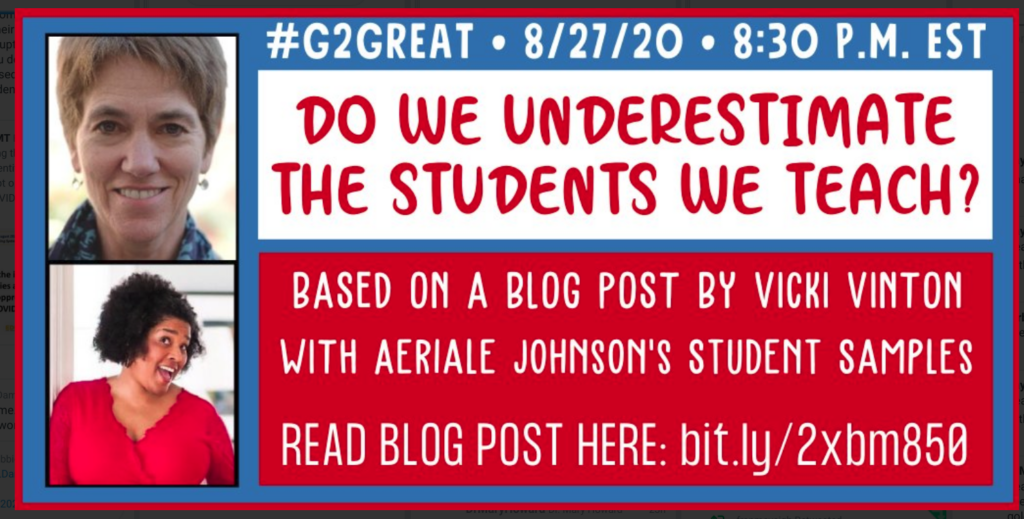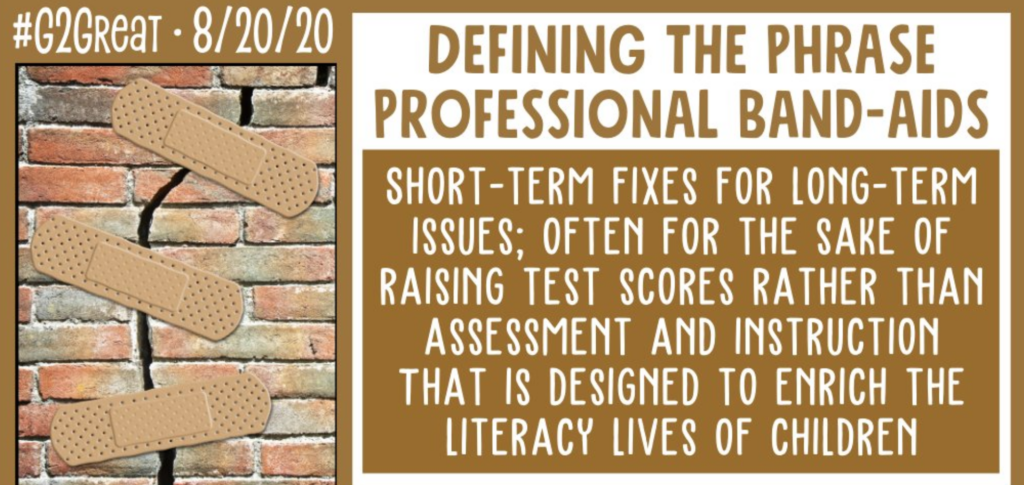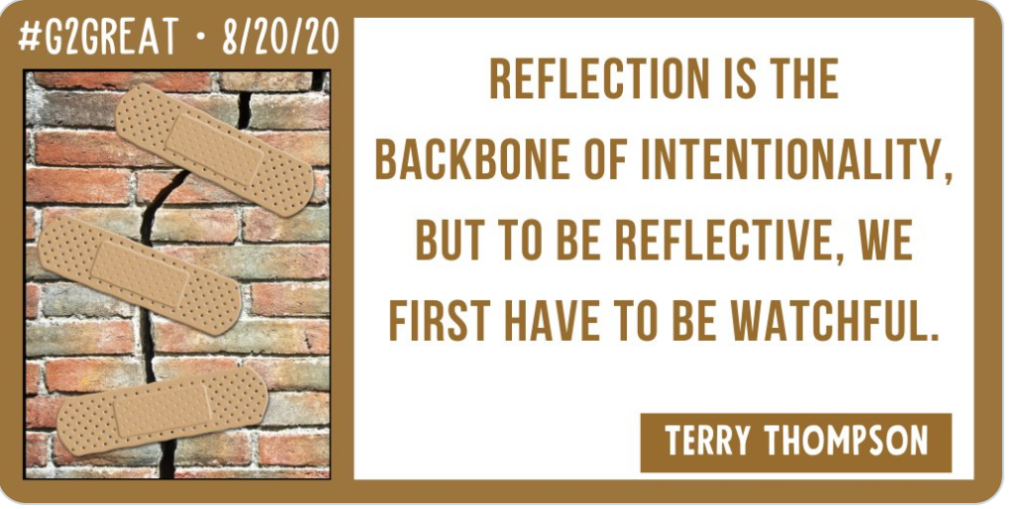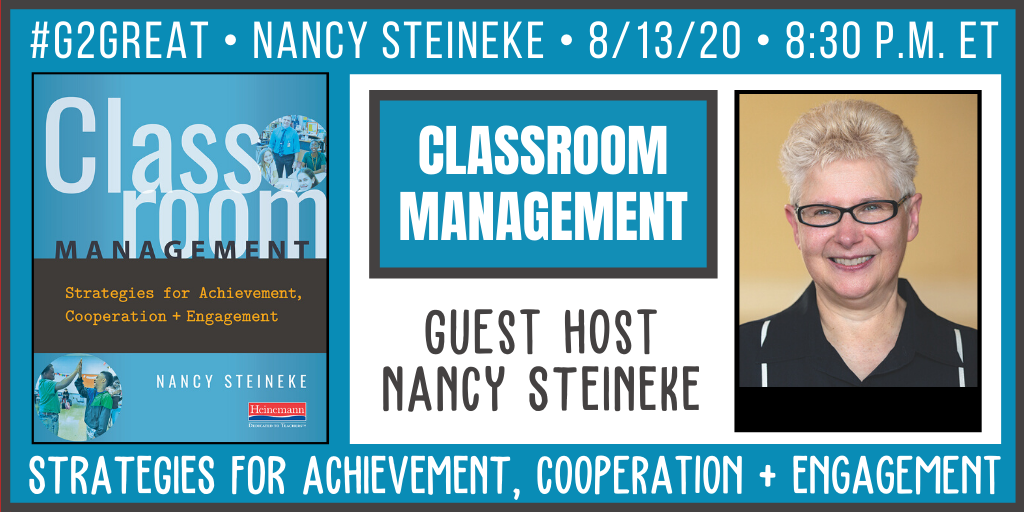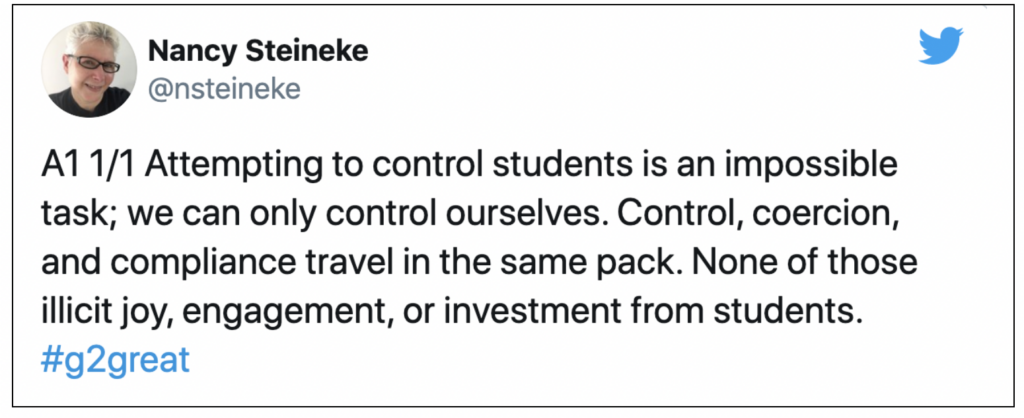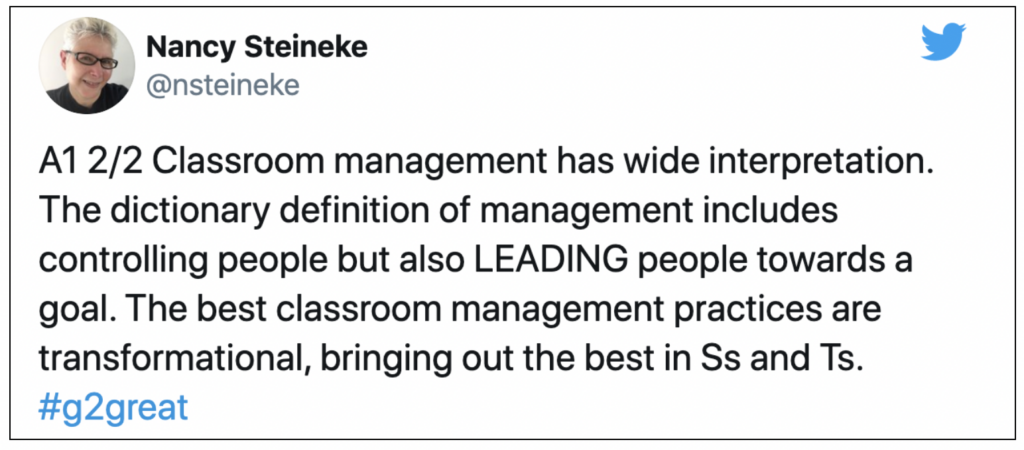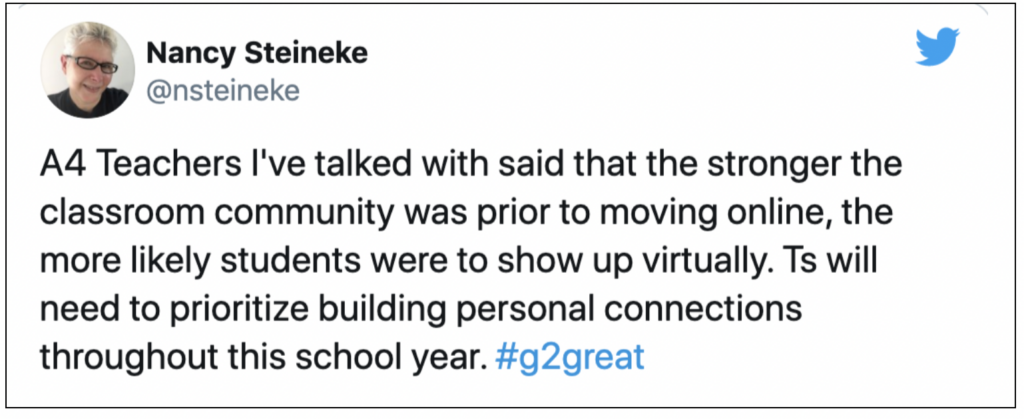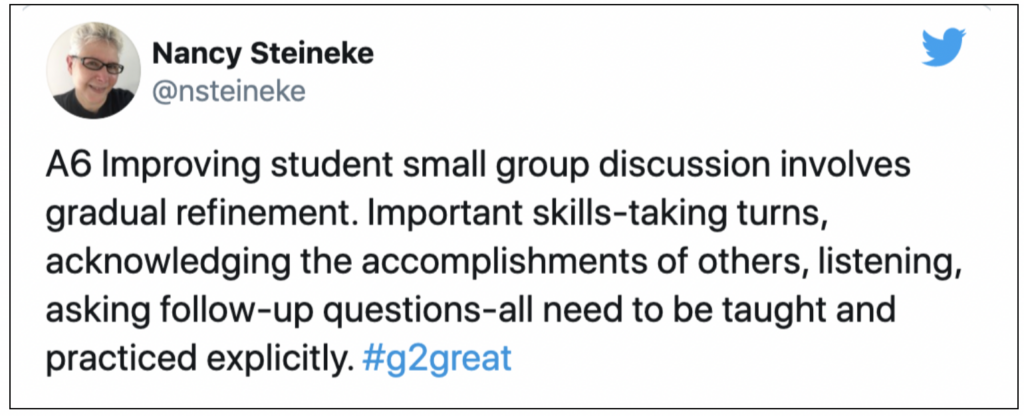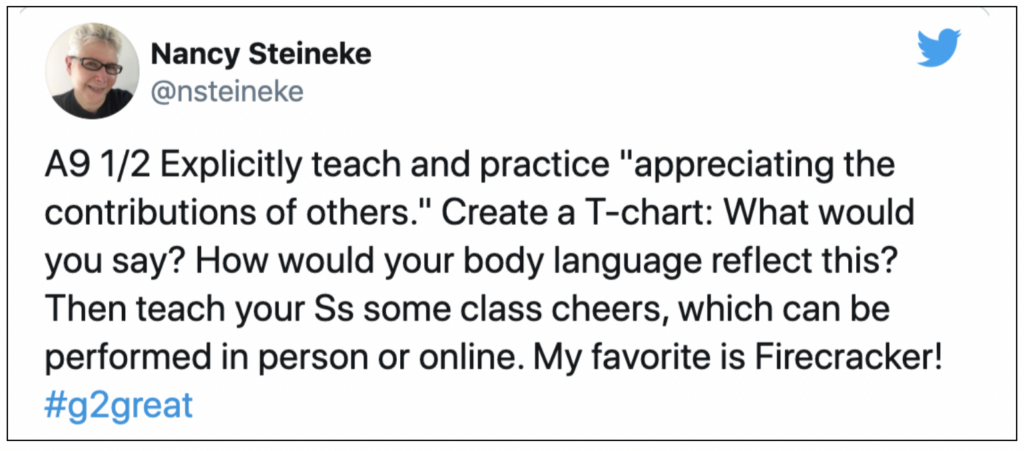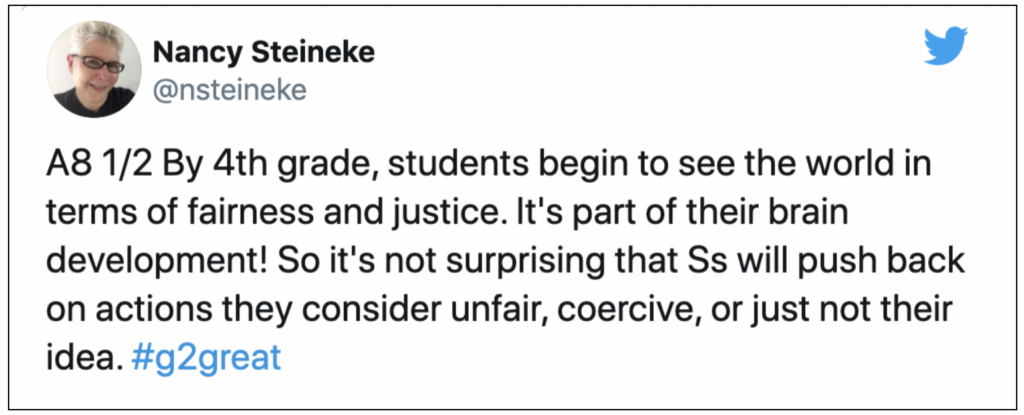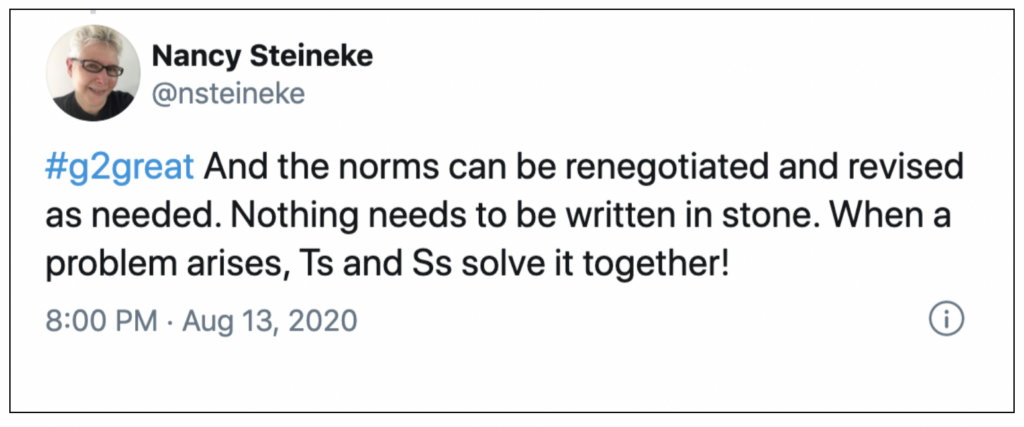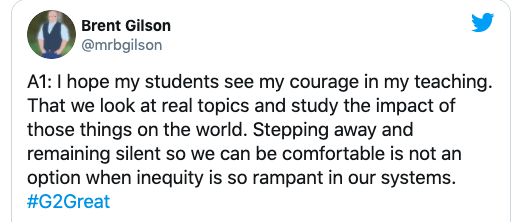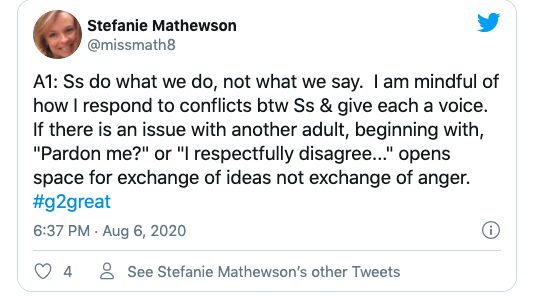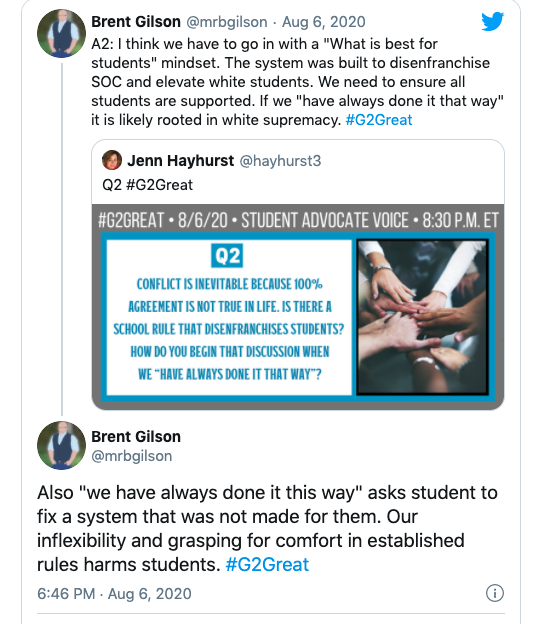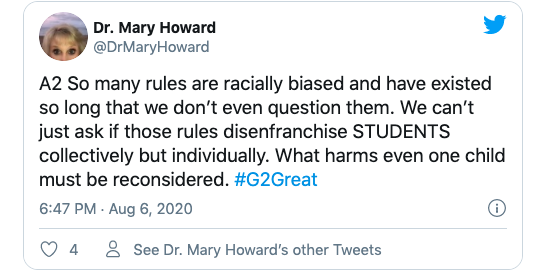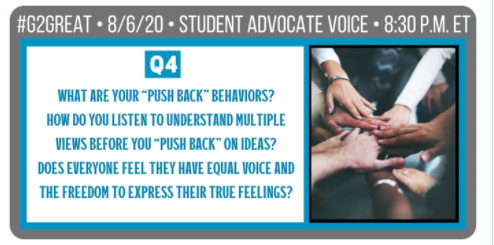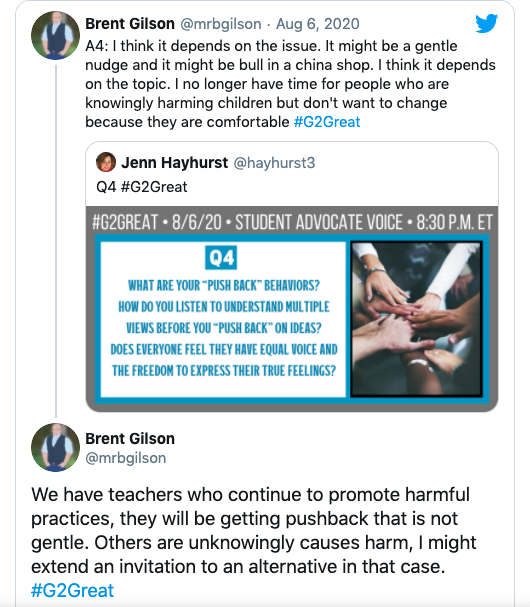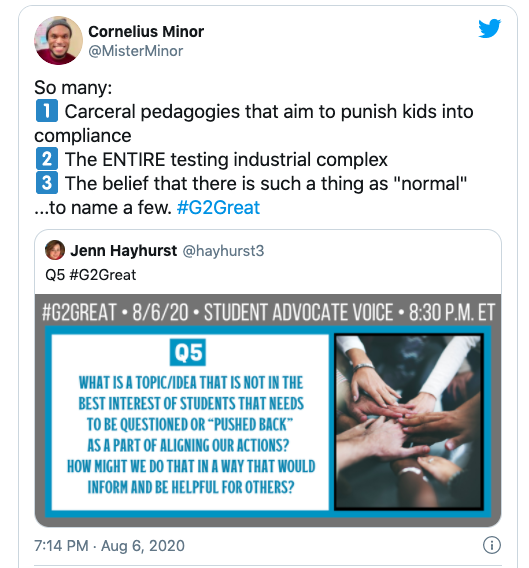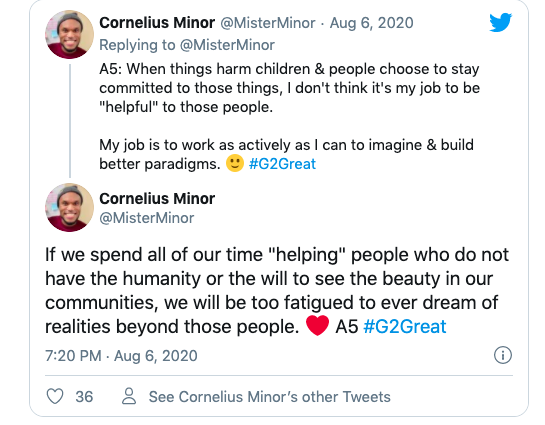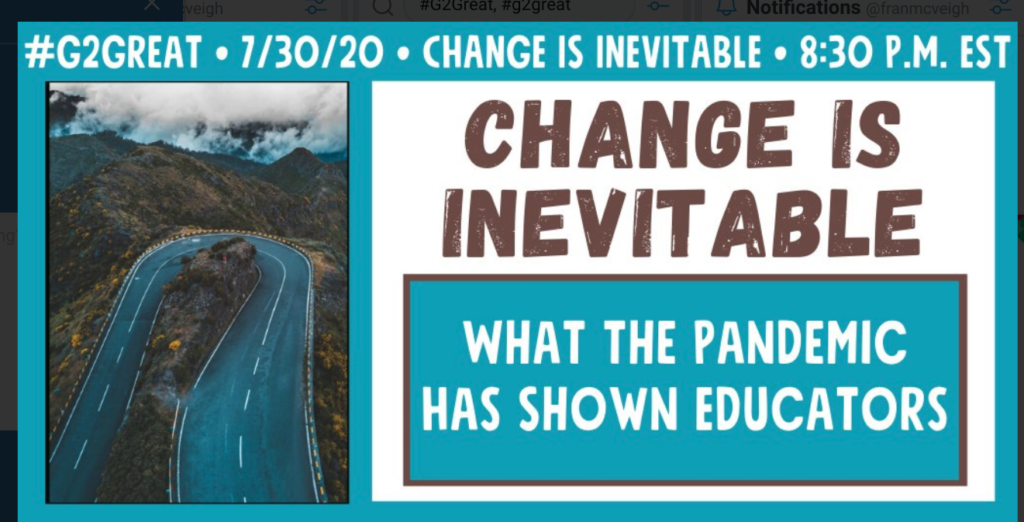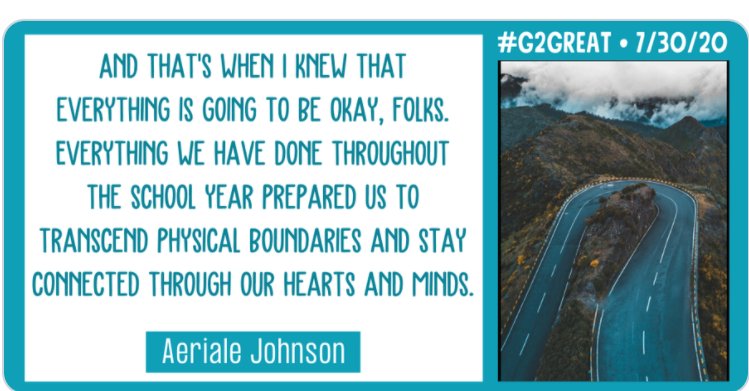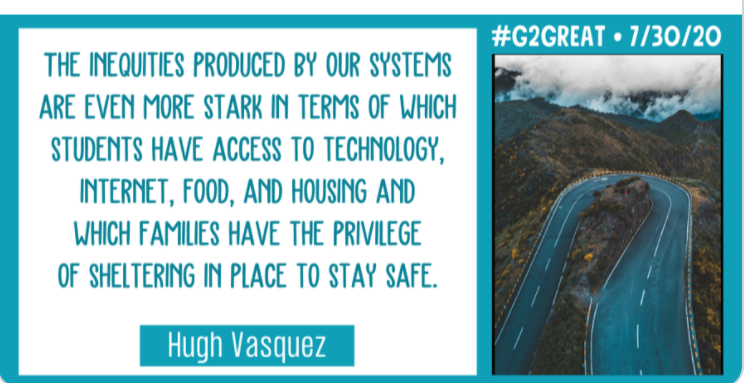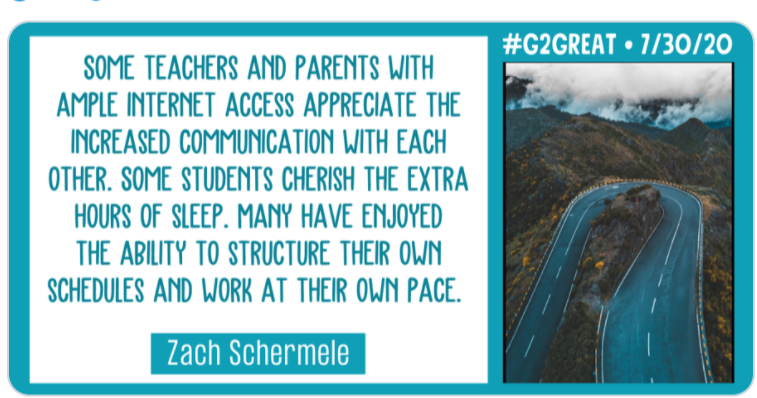By Fran McVeigh
Thursday, August 27th, #G2Great welcomed back familiar guest hosts Vicki Vinton and Aeriale Johnson. It was a night eagerly anticipated by the #G2Great team as we celebrated a blog post written by Vicki on February 23, 2020, that included learning examples from Aeriale’s second grade classroom. That post, “Do We Underestimate the Students We Teach?” can be found here.
But more importantly, I was personally eagerly anticipating this conversation with Vicki and Aeriale as a toast to the end of summer 2020, this neverending summer that desperately needed a finale. Vicki Vinton has been a part of my summers in New York City as a group of us typically connect and catch up on life dating back to our first #WRRD chat. I also met Aeriale in NYC at a #TCRWP summer institute while she was a teacher in Alaska and her stories fascinated me. I have also been one of Aeriale’s admirers asking about her “book” as she has so much to say about student learning.
And yet this blog writing task seemed like a mountain to scale after the chat. For the first round of quotes, I pulled 11 pages of tweets from the full Wakelet (here) that I felt would illustrate the brilliance of the chat. If you missed the chat, you really will want to read through the Wakelet as it was impossible to capture all the brilliance of our one hour chat in one mere blog post and 10 tweets.
So let me begin at the beginning.
Do you know Vicki Vinton and Aeriale Johnson?
It’s sincerely my pleasure to introduce my friends, Vicki and Aeriale. (See if you learn something new about either of them.) Vicki is a writer. She is co-author of What Readers Really Do: Teaching the Process of Meaning Making, (blog post on Literacy Lenses here); author of Dynamic Teaching for Deeper Reading: Shifting to a Problem-Based Approach, (blog post on Literacy Lenses here); The Power of Grammar: Unconventional Approaches to the Conventions of Language, (with Mary Ehrenworth); and a novel, The Jungle Law as well as a blogger at “To Make a Prairie.” Aeriale is an avid learner. This quote about Ellin Keene’s Engaging Children personifies my view of Aeriale: “I finished the book on a Tuesday; I integrated the four pillars of engagement she illustrates into my instruction on Wednesday.” Aeriale is a third grade teacher in San Jose, CA. in San Jose, CA, a 2016-18 Heinemann Fellow who blogs at Heinemann.com with posts such as “To Tiana, With Love,” as well as Kinderbender.com, the site of “Kinderbender: Drinking daily from the glass of tiny human giggles, hugs, innocence, brilliance, awe, and passion for life.” Both Vicki and Aeriale write extensively about all the brilliant learning that occurs when teachers are knowledgeable, build community and have high expectations.
Where do we begin?
“We must start their stories and identities with their excellence.” – Dr. Gholdy Muhammad
This quote came from Cultivating Genius and our June 18, 2020 chat (Literacy Lenses blog post here) just a little over two months ago. This book was also the #BookLove professional development book for elementary and secondary teachers this summer with two weeks spent on studying, reflecting, and listening to Dr. Muhammad twice.
How does this connect to the topic of “Underestimating Our Students?
Education is complicated. How we measure its effects is quite controversial and often very limiting. For the purpose of this blog, I am going to focus on values, beliefs, expectations, intellectualism, instruction, assessment and listening. I had to have some criteria in mind as I narrowed down tweets to use in this blog. The tweets that I immediately moved to the MUST use page were those that included statements about those topics and also matched my own beliefs and values.
Hmmm. Confirmation bias at work.
How do we focus on students without underestimating them and yet include their stories, their identities and their excellence?
Expectations … “the act or state of looking forward or anticipating” (dictionary.com)
John Hattie has teacher expectations at the top of his list of factors that impact student achievement with an effect size of 1.62. Other researchers have long documented the fact that a growth mindset allows teachers to focus on student assets instead of deficiencies. Research has shown that teachers may have lower expectations for students from low income families and/or for persons of color. It is a tragedy to set low bars of expectation for any students! As Vicki and Aeriale explain in the following tweets, “expectations” in the classroom need to be linked with learning opportunities.
To Think About: What are your expections? How do you communicate your expectations to students, caregivers, families, and the community?
Intellectualism … “the exercise of the intellect” (dictionary.com)
This emphasis on intellectualism builds an even higher target for students and their excellence. This is the call to thinking, to making thinking visible, and to applying learning as evidence of those higher pursuits by students. Students who are going to meet their potential are going to be challenged to grow every day. Low level tasks, worksheets, and activities will simply not exist in classrooms where intellectualism is the standard. Teachers in these classrooms will always be amazed by the challenging work that students do.
To Think About: How do you define intellectualism in your classroom and then communicate that value to students, caregivers, families, and the community? (Or are your children stuck being “students”?)
Instruction … “the act of assessing; appraisal; evaluation” (dictionary.com)
Instruction that values student stories, identities and excellence is rooted in a culture of belief that students can construct knowledge as they read and write. Right answers are not the norm. Inquiry is a focus and questioning is a routine expectation for students and not an inquisition by the teacher. Students need time and space to be curious and to build the relevance that matches their lives and leads to deeper curiosity and wonder.
To Think About: How do our basic beliefs about instruction emphasize curiosity and inquiry as well as nurturing genius?
Assessment … “the act of assessing; appraisal; evaluation” (dictionary.com)
Assessment, a word derived from the Latin word assidere, means to sit beside. If we truly value meaningful assessments then we will consider the ones that allow us to sit beside students. We can share assessment results that are qualitative and rich in descriptions of all that students “can do” instead of lists of skills that may not YET be under the reader’s/writer’s control.
To Think About: How do you communicate what you value about assessments to students, caregivers, families, and the community?
Listening … “paying attention; heeding, obeying” (dictionary.com)
One of the most powerful tools in a teacher’s toolbox is the power of listening which is often underestimated. Wait time is seldom mentioned in new educational research but it still is a free attached, accessible resource. Time and how we allocate it is critical. It’s also an observable way of checking for alignment of values, beliefs and resources when matched with the priorities in the daily lesson plan/schedule.
To Think About: How do we ensure that students have enough time to make sure their invisible thinking is deeply understood?
In conclusion . . .
We all have different but yet equally challenging roles in education. Whether we are beginning to plan for school or we have already planned and executed the first week(s) of school, how will we continue to reflect on our expectations for our students? How will we be responsive to the students in front of us? What will show up in our time allocations? Our reflective blog posts? Our Twitter conversations? How will we use what we know to make this the best learning year possible for our students? Your values and beliefs will show in many visible ways as the year progresses. Prioritize based on intellectualism, instruction, assessment, and listening to your students and your families.
What are your expectations for your students? How will we know?
